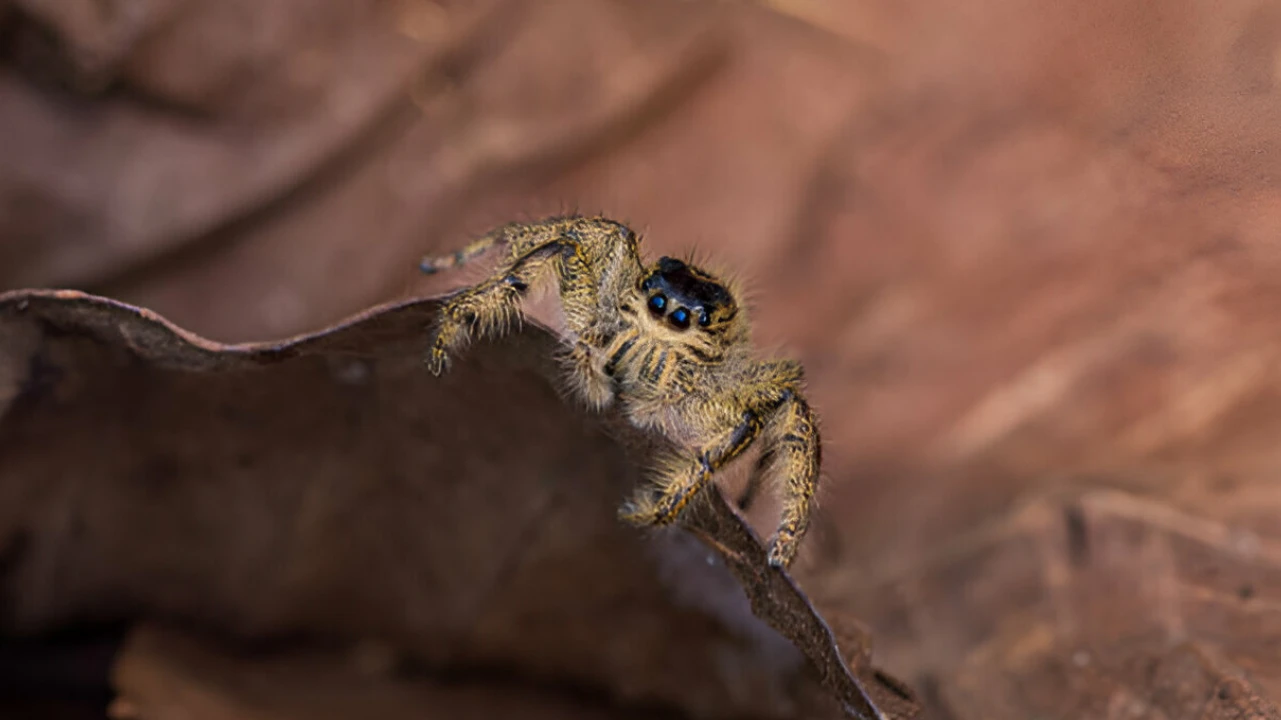Hey there! Have you ever noticed a wolf spider scurrying throughout your ground and idea, “Wait, does a wolf spider chunk? Should I be concerned?” I completely get it—those little critters can look intimidating with their fuzzy legs and brief moves. But don’t strain! I’m here to walk you thru the whole lot you want to understand about wolf spiders and their bites. Picture this as a comfortable chat wherein I’ll share all the good stuff—what they may be, if they bite, what a bite looks as if, and how to manage it. By the quit, you’ll experience like a wolf spider pro, prepared to address any eight-legged encounter with self assurance. Let’s get commenced!
What Are Wolf Spiders, Anyway?

Okay, first matters first: what’s the address wolf spiders? These guys are like the lone rangers of the spider international. They don’t play around with webs like different spiders—as an alternative, they hunt their prey down like tiny, stealthy predators. Ever puzzled why they’re referred to as “wolf” spiders? It’s because they chase their food with the focus of a wolf at the prowl. Pretty cool, proper?
What Do They Look Like?
Picture this: a wolf spider is commonly brown or grey, with dark stripes or spots that give it a rugged, outdoorsy vibe. They’re now not massive—maximum are approximately half of an inch to 2 inches lengthy, inclusive of their legs—but they’ve were given this fuzzy, muscular look that says, “I’m built for action.” Their eyes are the real standout, even though. They’ve were given 8 of them organized in 3 rows, with the middle ones glowing like little headlights. It’s those eyes that lead them to such splendid hunters—they are able to spot a worm from a mile away (well, perhaps no longer a mile, but you get the idea).
Where Do They Hang Out?
Wolf spiders are overall ground-dwellers. You’ll discover them in gardens, forests, or below rocks and logs, just chilling in their burrows. Sometimes, whilst the climate gets cold, they sneak indoors searching out warm temperature—maybe under your sofa or in a basement corner. I once discovered one in my laundry basket, and permit me inform you, it changed into a marvel celebration I didn’t sign up for! They’re solitary, nocturnal, and superb impartial. Oh, and here’s a candy tidbit: the moms convey their egg sacs on their backs, and after the babies hatch, they journey round like little spider backpackers. How lovely is that?
Does a Wolf Spider Bite Humans?
Alright, let’s address the massive query: does a wolf spider chunk human beings? Yes, they are able to, but here’s the reassuring component—they don’t want to. Wolf spiders are shy, no longer competitive. They’d as a substitute dash faraway from you than choose a combat. But if they experience trapped or scared—like if you accidentally take a seat on one or it receives stuck to your sleeve—they could nip you in self-defense. Think of it like this: if a person startled you in a darkish alley, you would possibly soar or yell, right? Same deal for a wolf spider—it’s just defensive itself.
When Might a Bite Happen?
Most bites happen by accident. Maybe you’re digging in the garden and flip over a rock where a wolf spider’s hiding—bam, it panics and bites. Or picture this: you grab a pair of boots you haven’t worn in weeks, slip them on, and surprise! There’s a spider inside feeling squished. That’s when a bite might happen. It’s not like they’re plotting to get you—they’re just caught off guard.
How Often Do Bites Occur?
Here’s the good news: wolf spider bites are pretty rare. These spiders are pros at avoiding humans. I mean, how often do you really cross paths with one in a bite-worthy situation? Not much, right? Most folks live near wolf spiders their whole lives and never get bitten. So, while it’s possible, it’s not something to lose sleep over.
What Does a Wolf Spider Bite Look Like?

So, say you’ve got a mysterious mark on your pores and skin and you’re wondering, “Is this a wolf spider chew?” Let’s figure it out collectively. A wolf spider chew commonly looks as if a small crimson bump with tiny puncture marks—like little dots wherein its fangs said good day. The region might swell up a bit and feel gentle, sort of like a mosquito chunk with a piece more mind-set. I remember my cousin Jake freaking out over a red spot on his leg, convinced a wolf spider got him. Turned out it was just an itchy reaction to a new soap—but it taught me how easy it is to mix things up!
Spotting the Bite
The bite itself is pretty straightforward: red, slightly raised, maybe a little itchy or sore. It’s not going to win any beauty contests, but it’s not gruesome either. If you’ve been hanging out in wolf spider territory—like a damp basement or a leafy backyard—that might be a clue it’s from one of them. Still, it’s smart to keep an eye on it, just in case.
How’s It Different from Other Bites?
Now, here’s where it gets problematic—telling a wolf spider chunk other than some thing scarier, like a brown recluse or black widow bite. A brown recluse chew can turn nasty, leaving a deep, open sore that looks manner worse than a wolf spider’s mark (according Healthline). And a black widow bite? That’s more about muscle cramps and whole-body drama. Wolf spider bites are milder—no oozing sores or crazy symptoms.
What Are the Symptoms of a Wolf Spider Bite?
Okay, allow’s say a wolf spider did chunk you—what’s going to show up? Don’t worry, it’s now not as horrific as you would possibly assume. Most bites aren’t any big deal, however it’s precise to recognize what to anticipate so that you’re now not caught off guard.
The Usual Suspects
Here’s what you might notice:
- A red bump with those two little fang marks
- Some swelling around the bite
- A bit of pain or a stingy feeling
- Itching that makes you want to scratch (but try not to!)
It’s like a bee sting’s milder cousin—demanding however viable. For most human beings, that’s the worst of it, and it fades away in some days.
When Should You Worry?
Now, I’m all about keeping things chill, but there are a few red flags to watch for. If you see any of these, give your doctor a call—it’s better to play it safe:
- A red streak shooting out from the bite (could mean infection)
- Hives or a growing rash
- Swelling in your face or trouble breathing (super rare, but serious)
- Feeling dizzy or faint
These could mean an allergic reaction or something else going on. It’s not common with wolf spiders, but you’re too awesome to take chances, right?
How Do You Treat a Wolf Spider Bite?

Got a bite? No panic needed! Treating a wolf spider bite is easy-peasy, and I’ve got your back with some simple steps. You’ll be feeling better in no time.
First Aid Like a Pro
Here’s what to do:
- Wash it up: Grab some soap and warm water and gently clean the bite. Keeps the germs away!
- Cool it down: Pop an ice pack or a cold washcloth on there for 10-15 minutes. It’ll tame the swelling and feel oh-so-good.
- Ease the itch: If it’s driving you nuts, try an antihistamine like Benadryl from the drugstore.
- Zap the pain: A little ibuprofen or acetaminophen can knock out any soreness.
That’s it! Treat it with some TLC, and it’ll heal up fast. You’ve got this!
When to Call the Doc
Most bites are fine with home care, but if things don’t improve after a couple of days—or if you spot those weird symptoms I mentioned—see a doctor. They might give you something stronger or check for infection. But honestly, that’s rare. You’re probably golden with just soap and ice.
How to Keep Wolf Spiders from Biting You
Prevention’s the call of the game, my pal! Why address a chew while you can avoid it altogether? Let’s communicate approximately some easy methods to maintain wolf spiders at bay—they’re like your non-public spider-proofing toolkit.
Smart Moves to Stay Bite-Free
Try these tricks:
- Spray some protection: When you’re hiking or gardening, use an EPA-approved insect repellent. It’s like a force field for bugs and spiders!
- Shake it out: Before slipping into shoes or jackets that’ve been sitting around, give ‘em a quick shake. No surprise guests allowed.
- Dress the part: Long sleeves, pants, and gloves are your buddies when you’re in spider territory—like a knight’s armor, but comfier.
These little habits can save you a lot of hassle. Who doesn’t love a win like that?
Making Your Space Spider-Unfriendly
Want fewer wolf spiders crashing your place? Here’s how:
- Seal the deal: Patch up cracks around doors and windows—think of it as locking the spider door.
- Declutter: Clear out piles of leaves or junk where spiders love to hide. A tidy yard is a spider-free yard!
- Firewood smarts: Keep wood stacks outside and check them before bringing logs in. Spiders adore those cozy piles.
It’s like setting up a “no spiders allowed” sign—simple and effective.
Wrapping It Up
So, there you have it—the whole thing you want to recognize approximately wolf spider bites! These fuzzy hunters would possibly appearance tough, however their bites are usually only a small blip at the radar. With a little understanding, you could spot a chew, treat it like a champ, and maintain the ones spiders from your life. I desire this chat has left you feeling equipped to stand any wolf spider that crosses your course—with out the worry. Have you ever had a run-in with one? Drop your story inside the comments—I’d like to listen all approximately it! Stay curious, stay secure, and let’s keep exploring the wild global together!


















Leave a Reply
You must be logged in to post a comment.